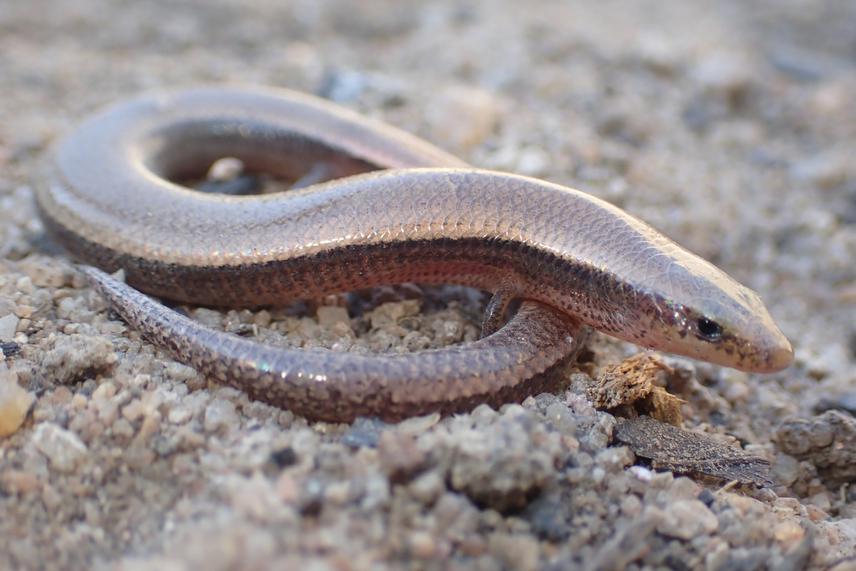The project the curse of having no legs: A quest to find a limbless lizard not seen in over 100 years has the goal of finding and documenting two poorly known species of lizards. Thanks to our previous Rufford grant we were able to find one of the lizards, the skink Proscelotes aenea, in a small town, where it was seen over 100 years ago. The other lizard, Scolecoseps boulengeri, however, was not seen. We think that due to the fact that this species is limbless, it may be mistaken for a snake and actively killed by local communities – a well-documented behaviour in this region, which may have led to its local extinction in Lumbo. Both these species are fossorial, living on the superficial layer of the soil. They are therefore very hard to observe and require extensive field surveys.

A photo of the Montane skink, Proscelotes aenea, a species the project found in Lumbo. This was the first time the species was see in over 100 years and also photographed alive. © Ali Puruleia.
Our goal in this project is to use the knowledge we generated from our previous survey in the small town of Lumbo and conduct another survey in a more rural area, with less human impacts – Memba. We expect to find both species there and use this information as evidence to evaluate both species’ conservation status and recommend the regions of Lumbo and Memba as a Key Biodiversity Area. We think that these species are particularly vulnerable to human activity due to soil degradation where they live and also due to direct persecution since they resemble small snakes. Therefore, protecting their habitat may be instrumental to prevent their extinction.
Header: A photo of the Montane skink, Proscelotes aenea, in its natural habitat and showcasing one of the reasons why it is important to conduct extensive surveys – they are very shy and hard to see. © Ali Puruleia.